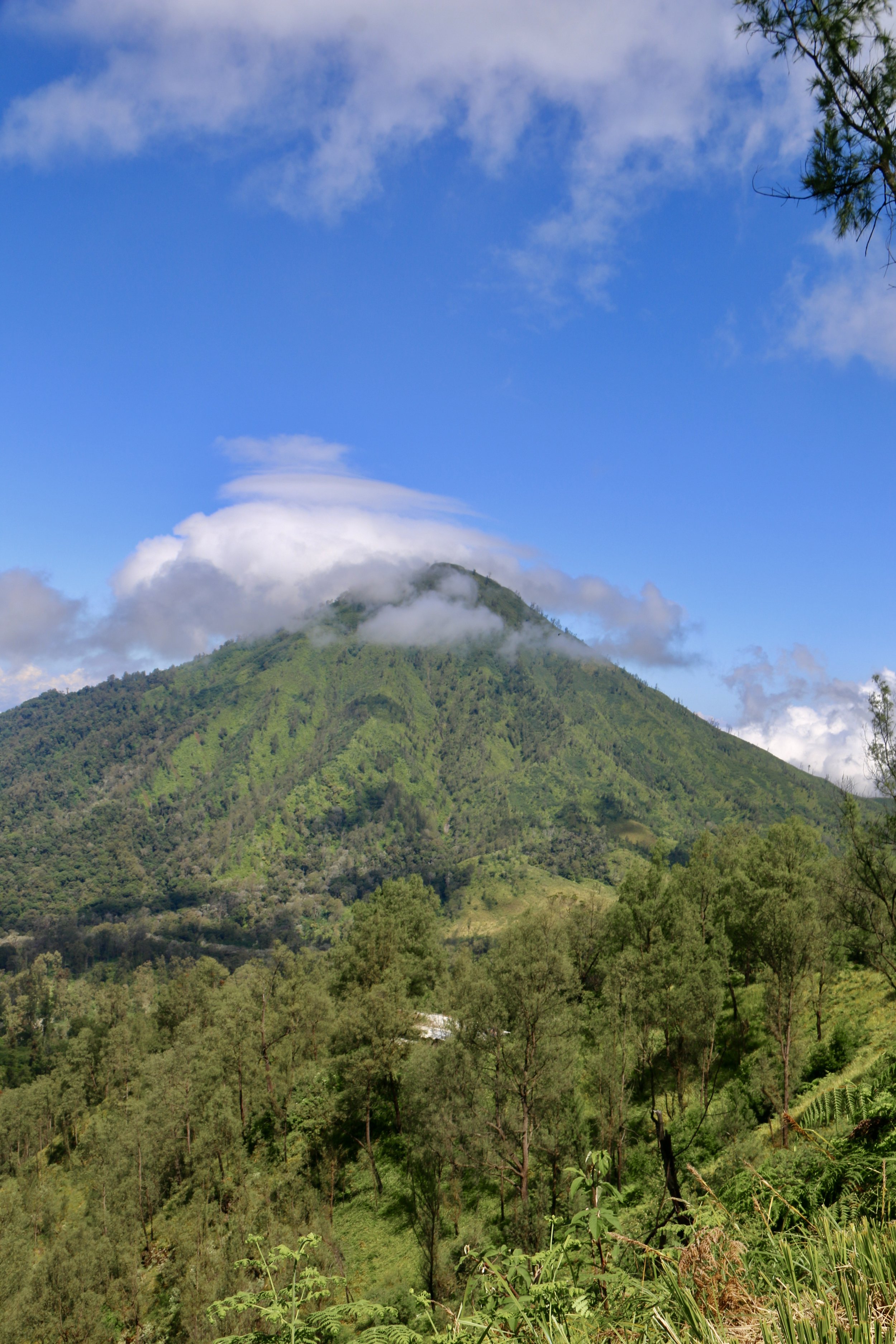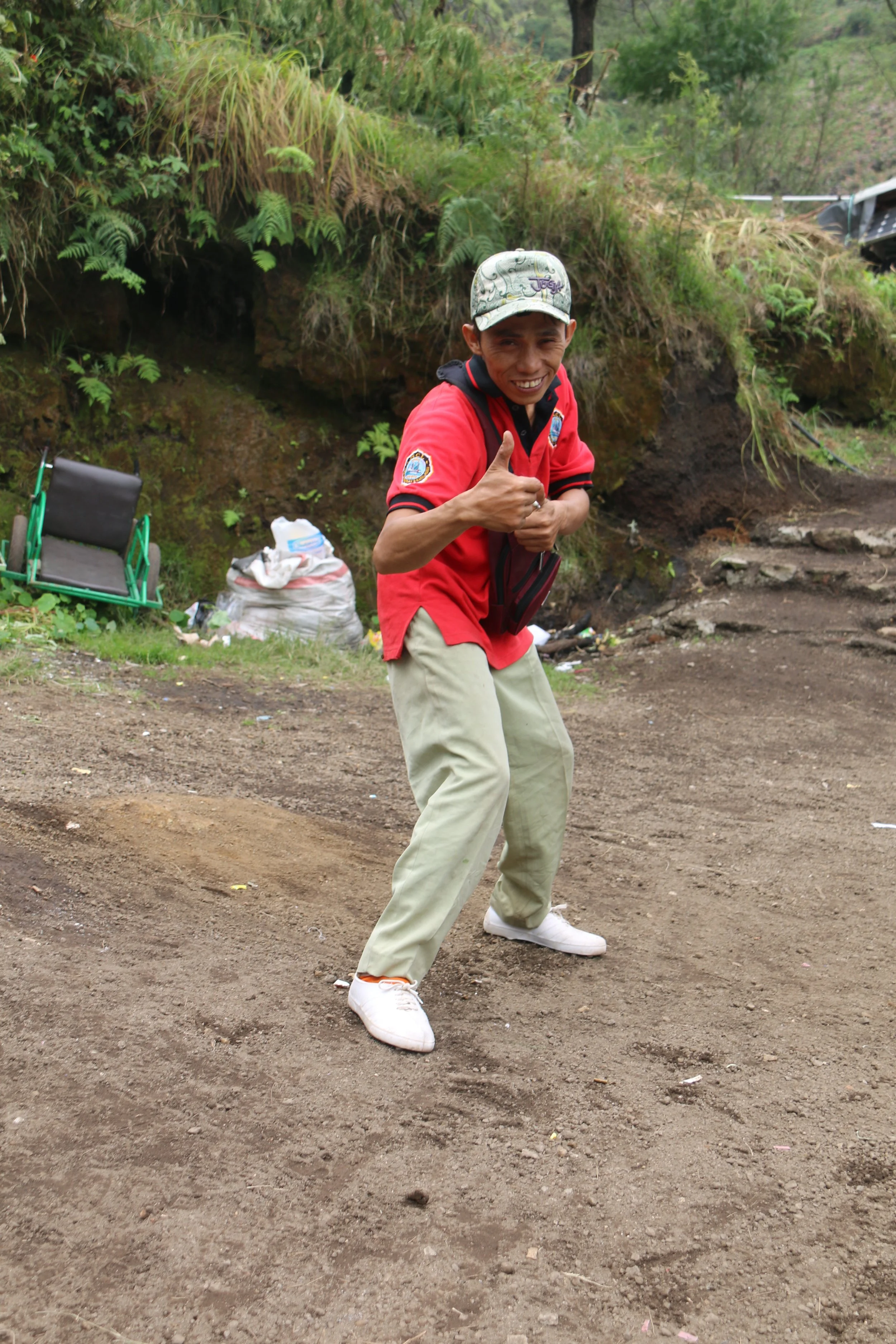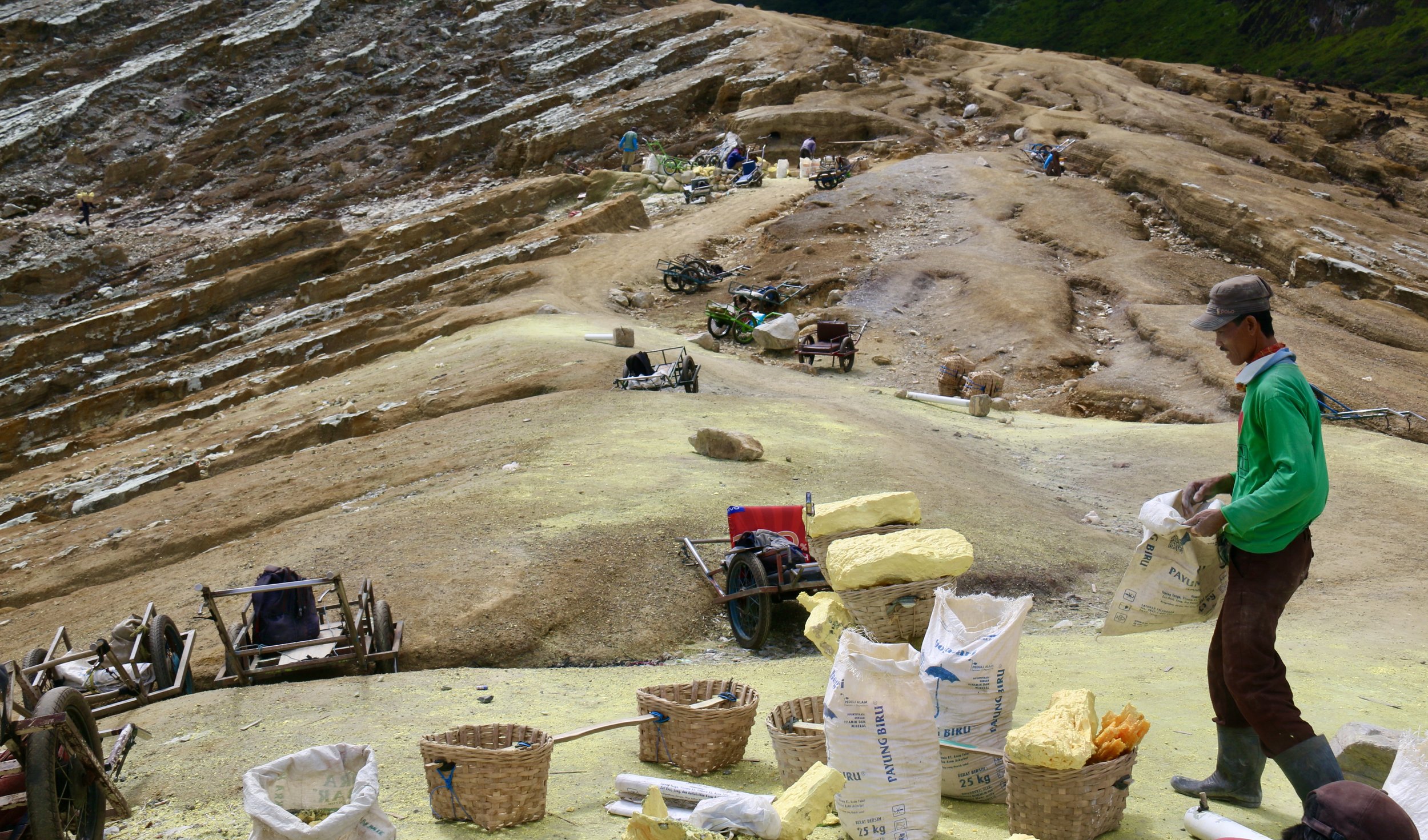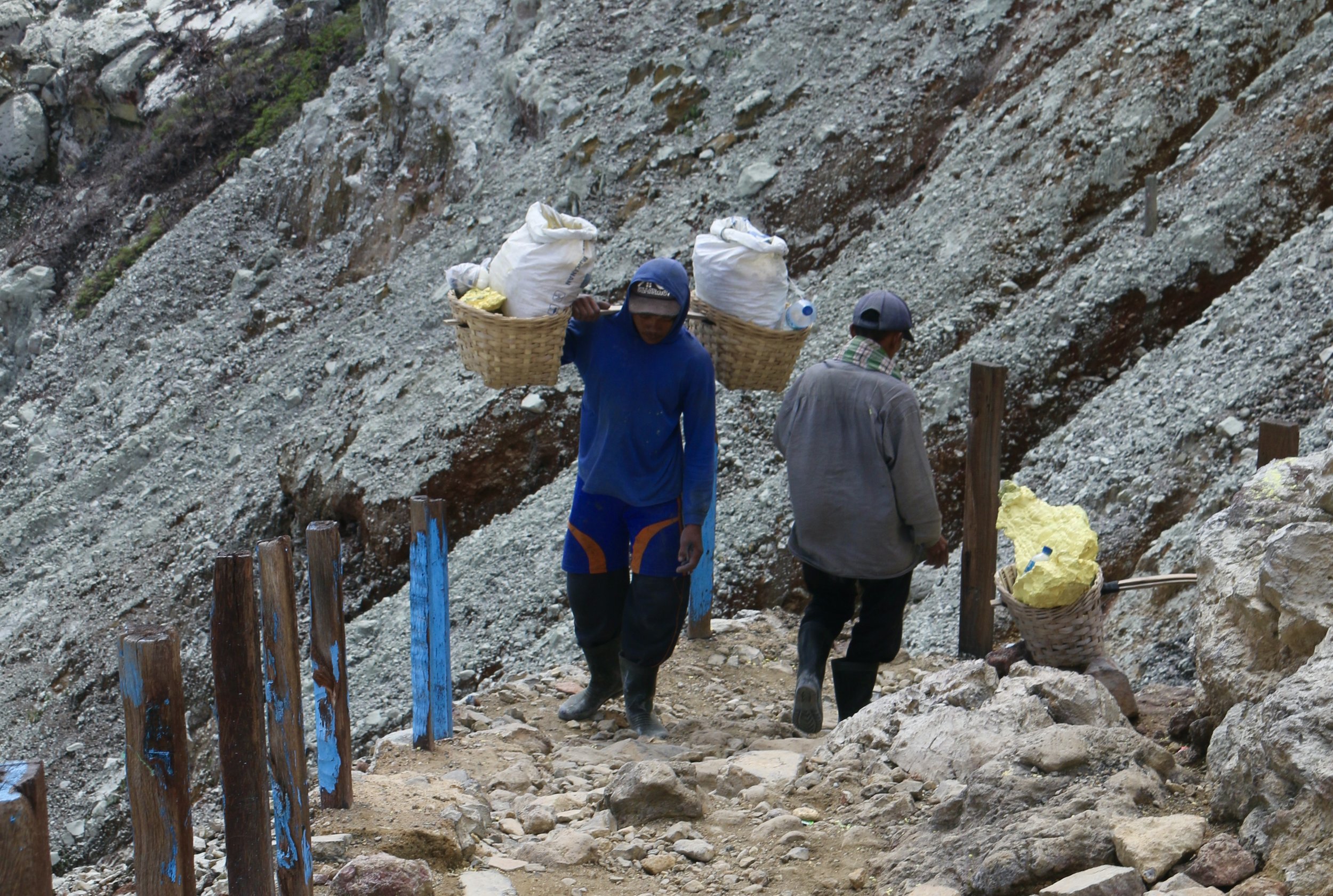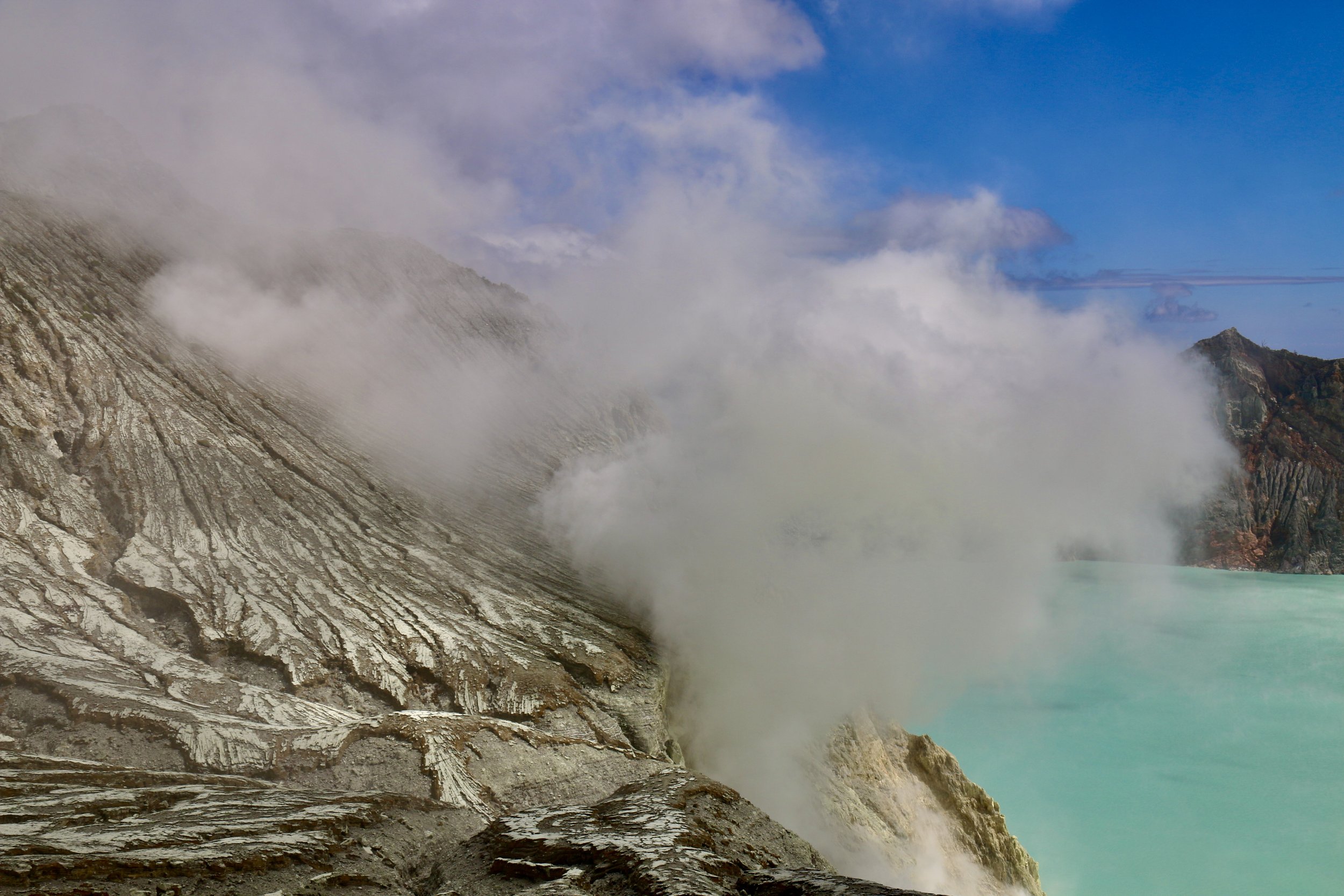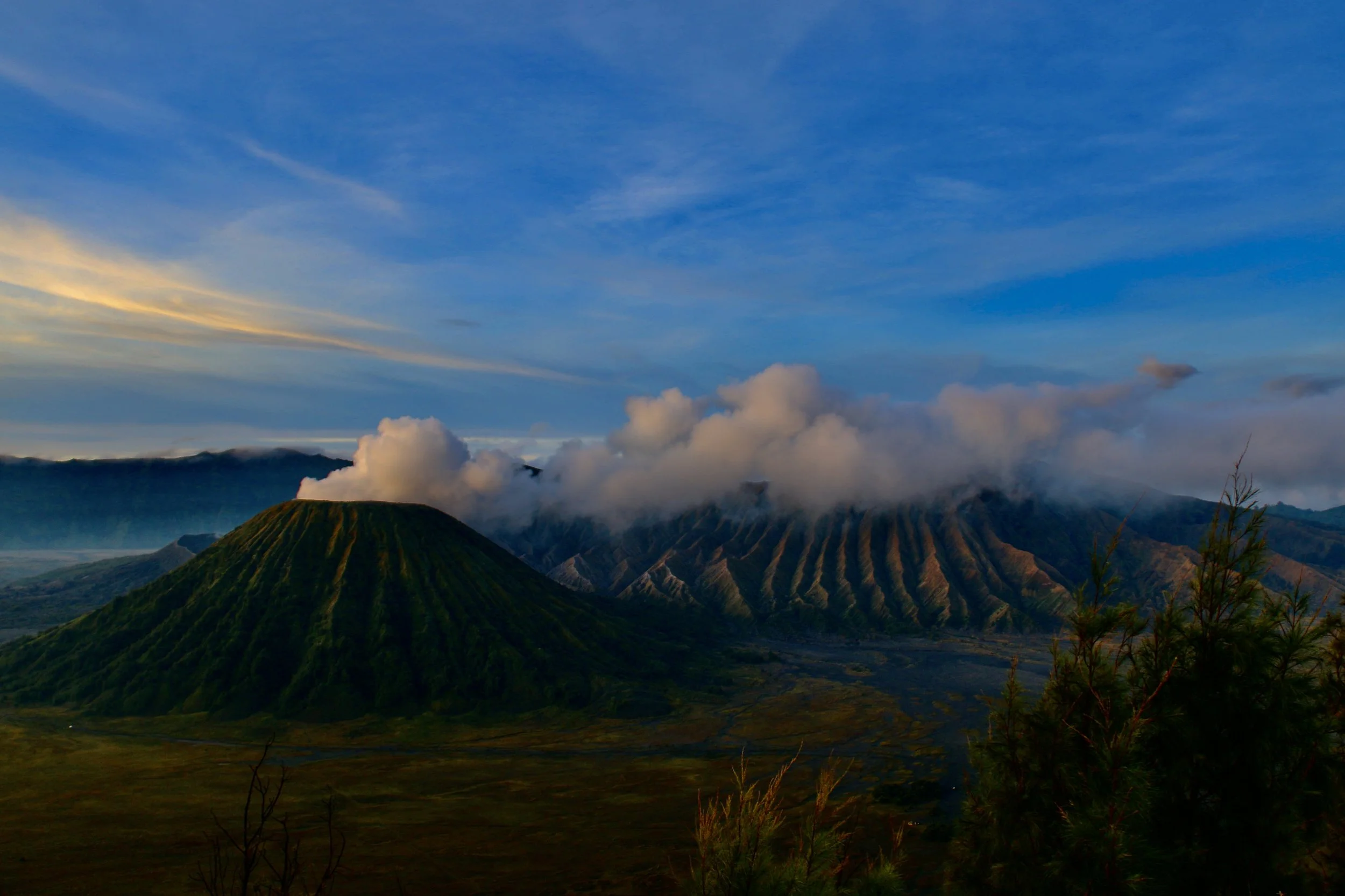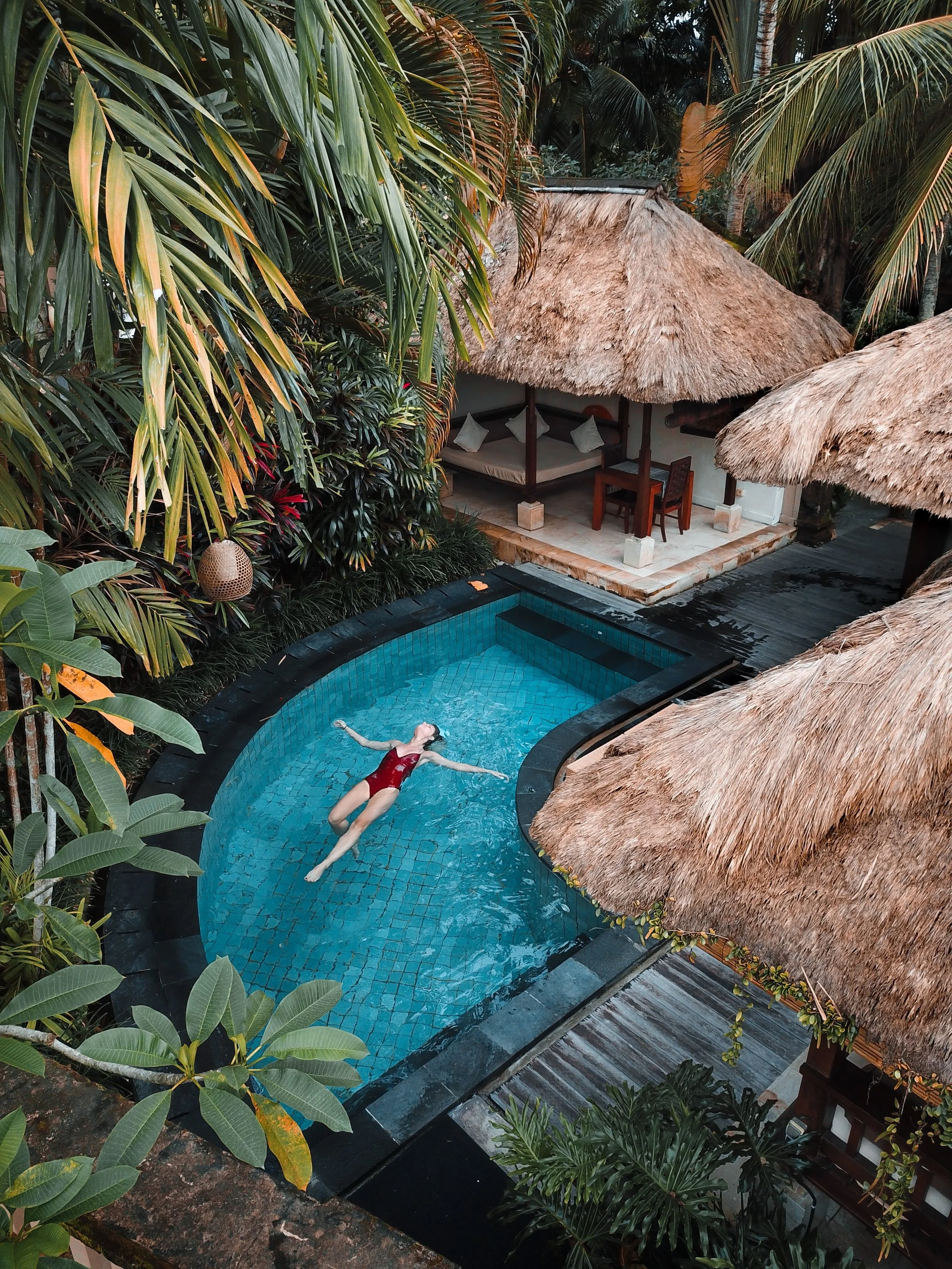In Search of The 'Devil's Gold' Deep Within An Active Volcano.
Standing at the foot of Mt Ijen contemplating the steep sides of this mighty colossus, rising some 2,800 meters above sea level I find myself weighing up the pros and cons of a steep 3 km trek to the top.
At this juncture, I am sorely tempted to turn tail and head back to the comfort of the air-conditioned car and enjoy a leisurely ride back to my hotel. Suddenly I am surrounded by a phalanx of mountain guides who assure me that the climb is not too bad and, if I find it too tough three strong fellows will pull me all the way to the top on a cushioned trolley.
This particular volcano is one of a closely-knit group outside the city of Banyu Wangi in East Java. Mt. Ijen, the best–known, given its caldera contains an acidic, one-kilometre wide lake. Other unique phenomena are the bright blue flames that shoot out from the side of the crater.
However, this mighty mountain does have a darker side.
It has been more than 64 years since Mount Ijen last erupted, but the volcano is still extremely active with its steep-sided crater and the surrounding lake being mined by some of the most robust men in the world.
Mt Ijen’s sulphur deposits are a valuable commodity, used in a variety of goods from the manufacture of matches and as a sugar whitener among other things. Extracting the sulphur from the bottom of the cauldron is a complex operation and is done by hand, a back-breaking and ofttimes treacherous occupation given the hazards of collecting what is known locally as, ‘The Devils Gold “
If I am to witness for myself how these intrepid miners go about their work as well as see the cauldron from the top I have to begin the long walk to the top.
The path, although well maintained still makes for a strenuous climb, its gradient becoming ever steeper the higher one ascends. Suddenly at my side three “trolley pullers’ appear who are doing their damndest to get me to take a seat on their trolley telling me that they will get me to the top in double-quick time.
Their loquacious leader, Parius, is a diminutive fellow of about 5ft 1in. tells me in no uncertain terms that it is unlikely that I will reach the summit and will probably die trying. He assures me that their trolley is the absolute Rolls Royce of all the others on offer and their price is extremely fair.
I resist their exhortations, determined to conquer the beast on my own steam and therefore defying Parius’s prediction of my early demise. At the 1,100-meter mark, the price for the ride begins to descend and with my leg muscles burning and enduring severe shortness of breath, I think perhaps that the little fellow’s view of my alpine climbing ability was pretty accurate. So, exhausted I finally relent and hand over the required fee much to their delight. I hop aboard and my bearers set about their work with gusto with two pulling while the third pushes the carriage from the rear.
It looks like seriously strenuous work!
It takes me no time at all to lose any sense of embarrassment as I lie back and enjoy the ride watching these fit young gentlemen in harness lugging me up a mountain! Along the way we make several stops to allow descending miners to pass, their trollies filled to the brim with sacks of bright yellow sulphur weighing up to 200Kg.
The miners’ journey begins around midnight when they begin the 2,800m hike up to the top. Once they reach the summit, they then have to descend another 350 meters down a tortuous path into the crater itself where they begin a twelve-hour shift toiling in some of the most appalling conditions on earth.
Looking down, one can see the turquoise, milky blue lake which lies shimmering in the late morning sunshine disturbed only by the sulphur fumes billowing across its surface. Its exquisite beauty is somewhat marred by the fact that it is that the water is heavily acidic made up of a toxic cocktail of sulphur dioxide and other poisonous gasses dissolving within its depths.
Just a couple of meters above the water line, gigantic jets of sulphurous steam billow out from deep within the volcano’s core at times enveloping the band of miners chiselling away at its walls with long metal poles.
Molten sulphur is tapped from inside the rock using ceramic pipes that have been hammered into the side of the crater wall allowing the gasses to rise to the surface. When the steam hits the oxygenated air it cools and morphs from a dusty red liquid into hard, bright yellow solid blocks. It is this substance that the miners refer to as ‘Devil’s Gold,’ partly because of its colour but more importantly because it is a source of much-needed income.
The blocks are hacked into lumps the size of medium-sized pebbles, and loaded into two wicker baskets which are then hoisted on a pole across a miner’s shoulder. After toiling away for up to six hours at the source the most gruelling part of their day begins by carrying more than twice their body weight up the incredibly 70-degree slope of the crater.
The mining doesn’t just take its toll on the men’s backs and joints, it is their throats and lungs that take a terrible beating. The air at the level of the lake is acrid and thick with noxious fumes which makes the air so harsh the eyes of the miners' water continuously.
The wearing of industrial masks would protect their airways but unfortunately many cannot afford the price of a mask so most work with just a damp cloth covering their noses and mouths. The consequences of operating in such appalling conditions mean that most of the miners will eventually suffer from pharyngitis (inflammation of the back of the throat ) as well as developing a range of life-threatening respiratory diseases that will, over time ultimately kill them.
And, if that was not enough the men develop deep scars from carrying impossibly heavy loads to the rim of the crater leading to severe deformations of the spine. For all of this, the miner’s income equates to about Rp 200,000 a day (Approximately $US 12 ) and, with no health insurance, most of the men are terrified of falling ill.
The majority of the work is conducted between the hours of midnight and 7.00 a.m. when the air is supposedly ‘cooler.’ As they hack at the wall in the dark, tongues of bright blue flames, some as long as fifteen meters shoot from the ceramic pipes and ripple up the side of the crater walls. This phenomenon is caused by the spontaneous combustion of subterranean gasses ejected from deep within the cauldron where temperatures hover around 400 degrees Celsius (752 Fahrenheit). As the super-heated gasses escape they encounter the oxygen-filled night air and burst into flame. This dramatic occurrence is known as api biru ( blue fire) a continuous, spectacular cobalt firework display illuminating the blue waters of the lake and the vertiginous crater walls.
One of the miners, who has just carried a 90 kg hessian sack filled with sulphur to the volcanos summit tells me that It takes him about forty minutes to complete this strenuous hike. It will be the first of two such trips he typically makes each day. This is after climbing the 3 km track to the 2,800 mt. summit before he even begins his daily grind.
“My knees hurt a bit, “ he says “ and sometimes my shoulders especially” pointing to the deep scar tissue fissures gouged deep into his skin, “ but what other work is there?” He unloads his precious cargo into his trolley, for which he will be paid about 0.08 cents a kilo, and slowly trudges off for the long, thee kilometre walk down to the base. As he leaves he turns and says, “ I don’t want my sons to do this work. I must so that I can pay for their education.”
Most of the miners work for the sulphur mining company, PT Cadid which receives approximately thirteen tonnes of raw sulphur each day from the miner's labours which are processed and shipped to industries across Java. The volcanic sulphur is primarily used to whiten sugar, as well as being a raw ingredient in the making of soap, and skin treatments, cosmetics and is an essential component in the manufacture of explosives.
The miners of Ijen want to be the last generation to mine sulphur by hand. The work is treacherous, exhausting and extremely dangerous but these miners maintain that it is a sacrifice they are willing to make for their families,
As I begin my descent and head to the comfort of my hotel, I know that tomorrow, the Ijen miners will by design, return once more to scoop the volcano's yellow harvest off the crater’s floor.
East Java, June 2022



